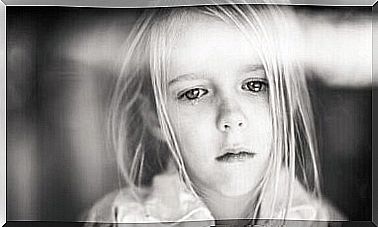How Do Mental Disorders Develop?

We are used to talking about various mental disorders and the symptoms that are typical of them. Yet we’re not really used to talking about how these psychological disorders develop, although that’s at least as important. Mental disorders always have a cause and the symptoms are not random either. On the contrary, every disturbance is a puzzle, the elements of which are logical and understandable.
Therefore we should ask ourselves: What triggers a mental disorder? Which predispositions must already exist in our heads? Is there a cause and effect relationship?
Mental disorders
A mental disorder, also known as mental illness, is a change in a person’s behavior and thinking. The disorder means that in some cases people are unable to lead normal lives or require continuous treatment in order to be able to live “normally”. Mental disorders can limit the life of the person concerned and cause them to become maladjusted and disturb others.
There are different types of disorders, but the most common are:
- Schizophrenia: when we hear voices that others don’t hear, that often incite us to do something.
- Autism: more common in boys than girls. Characteristic of this disorder is the deficit in development, which makes it impossible for the person affected to communicate, imagine something or plan something.
- Bipolar disorder: causes exaggerated and extreme emotions. For example, as soon as one is very happy, one becomes overwhelmed by an extremely depressed state.
- Personality disorder: a number of different disorders that affect emotional, affective, and social dimensions. The best known are Antisocial Personality Disorder and Restricted Personality Disorder.
- Eating disorder : when the mind destroys what we see, in this case our body.
- Attention Deficit (ADHD): common in children, this disorder is characterized by difficulty concentrating and controlling behavior.
- Panic Disorder: This type of disorder contains three different types. First, obsessive-compulsive disorder, second, post-traumatic stress disorder (PTSD) and third, general anxiety disorder.
The development of a disorder
Now that we’ve looked at the most common disorders, we wonder what happens in our brain in order for a disorder to occur. Why do some people develop these types of disorders and others not?
trauma
A commonly cited cause of developing a mental disorder is trauma. A traumatic event experienced in childhood (mistreatment, violence, abuse) can cause lasting damage and affect life as an adult. There is no specific age for trauma to occur. But we know that it can lead to eating disorders, panic or anxiety disorders, or other disorders. As Sigmund Freud said:
“Traumatic events that are experienced in childhood are stored in the subconscious, and these can become noticeable at any time and at any age. In some way, the subconscious can link a traumatic situation from childhood to an everyday situation in adult life, causing a mental disorder to develop. “
In this respect we owe a great deal to psychoanalysis. It revolutionized the way we understand disorders, retrained psychology and showed the importance of the behavioral patterns that we learned and internalized at a young age. Modern approaches such as the latest NLP (Neuro-Linguistic Programming) use these behavioral patterns to carry out interventions.
genetics
Some disorders develop because of genetics. It doesn’t mean you’ll have schizophrenia or depression just because someone in your family has suffered from it, but there is a greater risk.
This can happen more often with the following types of disorders in particular: autism, attention deficit disorder, bipolar disorder, depression, and schizophrenia.
As mentioned earlier, it doesn’t mean you’ll get a mental disorder just because a family member has been diagnosed with it. There are many factors at play, and they are not the same for everyone.
Environmental factors
There are several environmental factors that can trigger the development of a mental disorder. For example, the death of a loved one, general stress or a psychotic attack can be the trigger. This can also be the case with a divorce or substance abuse.
In young people, social or cultural expectations, i.e. what others expect of them, can trigger eating disorders, for example. The constant advertising claiming physical perfection and beauty intensifies this problem. Therefore, the number of cases has increased and the ages of the people at risk have decreased.
As we’ve seen, there are several factors that contribute to a mental disorder developing. There are others, such as certain infections, brain damage, or birth defects , that can promote the development of these types of disorders.









